It’s both more challenging and easier to be a nonprofit these days. On one hand, there are constant scrutiny and hateful commenters, but, on the other hand, networking and asking for donations has never been this simple. Let’s take a look at which social media help nonprofits thrive.
Social media for nonprofits: time for some data
Which social medium has the most daily active users? Let’s see the stats about each platform. Facebook, which is a very versatile platform, has around 1.6 billion daily users (and 2.4 monthly active users). On Instagram there are 600 million daily Instagramers, and 500 million users of Stories. There are 303 million LinkedIn users logging in at some time during the month, while Twitter garners around 134 million daily active users. What is more, 90% TikTok users say they visit the app every day, which amounts to around 658 million users.
Omnicore agency concludes that “The average engagement rate on TikTok in 2020 was 17.5%. With an average daily time spent on TikTok standing at 52 minutes, this is by far one of the most engaging social media apps today.”
Social media for nonprofits
Let’s entertain the question: what is the key element of running a nonprofit social media account? There may be many right answers, but personally, I’m leaning towards storytelling. And to tell a story, you need enough space to accommodate it. That makes social media platforms such as Facebook a natural choice for nonprofits who want to tell a longer story.
However, now that Instagram is a part of Facebook Inc., the character limit is the same. Also, microblogging is flourishing on Insta, making people describe an event or a thought in relation to a picture or a series of photos. Nevertheless, Instagram remains bound to evaluate a post by the image.
Then, there is TikTok, with it’s 60-second and 3-minute videos that let you tell a story with your voice, caption it, and really show what it’s all about. The same goes for Youtube, with the obvious difference, that a creator can upload longer videos (which are also usually more skillfully edited).
Less fitting platforms
LinkedIn recently upped their character limit to 3000, enabling users to share long stories, but the platform still remains work-oriented. Moreso, It might be difficult to trust the good intentions of a professional who is sharing a nonprofit’s fundraiser on their profile. Therefore, there are not many not-work-and-self-actualization-related posts about helping nonprofits on LinkedIn.
Finally, there is Twitter, with its character limit, discouraging creators from storytelling.
Best social media for nonprofits: #1 Facebook
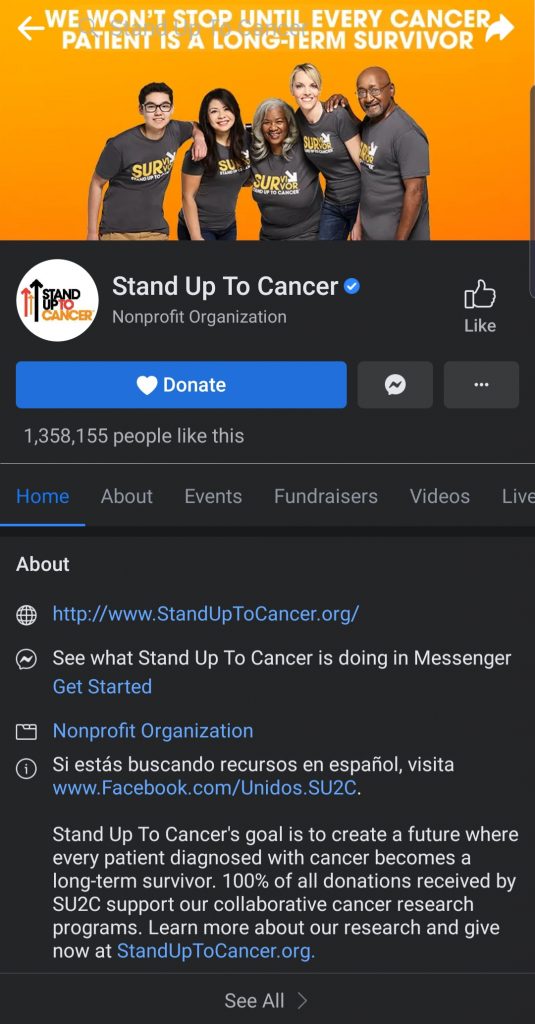
Facebook is still the most popular platform. Universally, people make fanpages for their businesses on the platform, and then it’s understandable that they do so also for nonprofits. Since Facebook is treated as the default, there is space for all the “ugly” or “difficult” matters there. Also, one could argue people feel more socially responsible and generous when they act under their own name, which is required for regular FB users.
Facebook is very fundraising-friendly, with it’s own fundraising functionality, buttons at the top of the page, and the moving button during scrolling. As far as the extra costs are concerned, FB does not take a percentage out of the collected sum. Also, fundraisers can be carried out directly in a post.
Keep it positive when possible
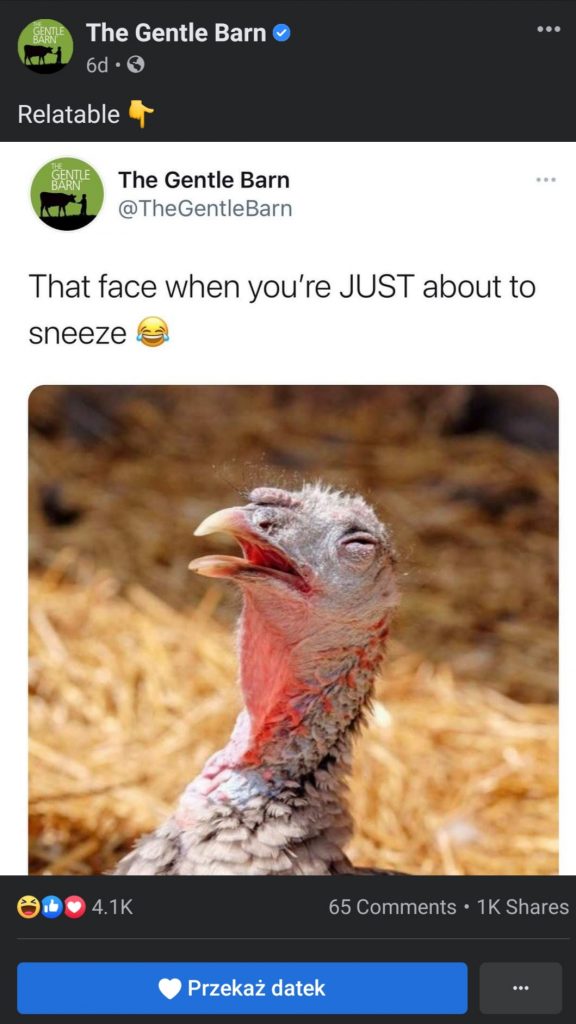
Remember that if you usually post sad and emotionally-draining content, people will naturally be able to stomach only so much of it. When you have positive news to share, be sure to post about it. There may be less donations, but that may be compensated by the likes, comments, and shares helping your engagement.
A Polish organization helping combat homelessness shared this joyful picture from their outdoor makeshift Monday kitchen and received many positive reactions in return.

Harness the power of Facebook Watch
Posting public videos to your fanpage on FB with some hashtags or an interesting caption can help drive more users to your account. If you’ve tried that already and it doesn’t work, don’t be afraid to work with the big fish. This is especially true about videos portraying dogs, cats, and wildlife rescuing. Those great big accounts and networks can give your platform the boost it needs. Just look below… it’s highly unlikely you’d get almost 8 million views on your own.
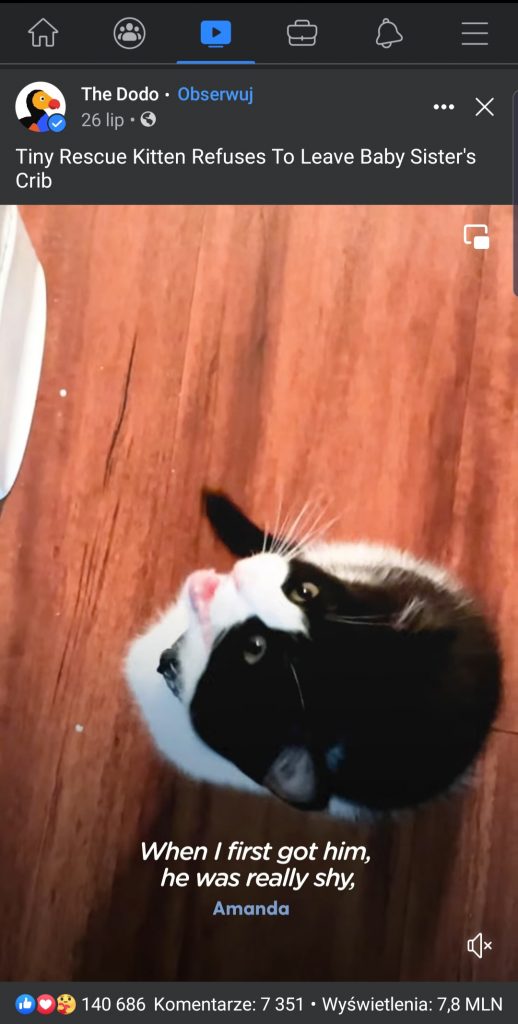
Go live
It’s important to switch it up from time to time. Going live helps drive traffic and engagement, and gives the creator a chance to show their cause. If you’re organizing an important event, be sure to plan a life to present how it’s going. This is also the case on Instagram and TikTok, particularly for animal rescuers working on some particularly striking or spectacular cases. See below how many views Stand Up To Cancer got on their live when compared to the number of reactions.
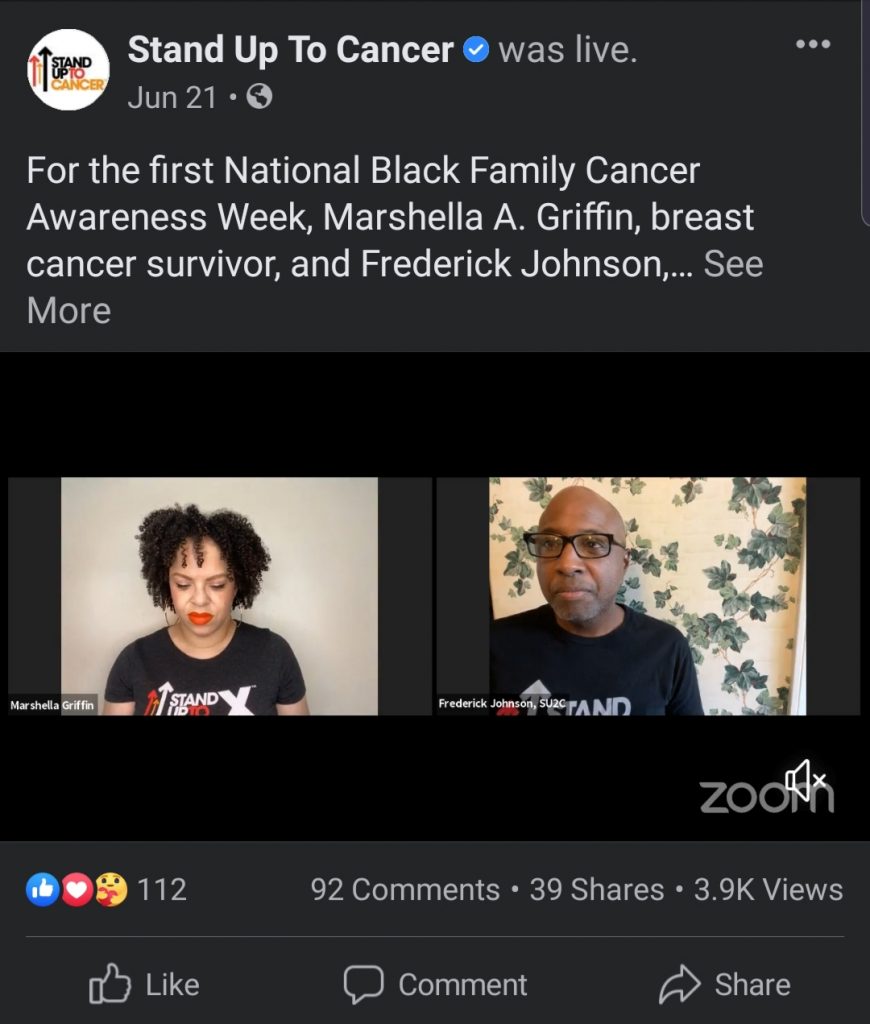
Best social media for nonprofits: #2 Instagram
Instagram has long been particularly popular with cat and dog rescues and 501c3 organizations helping other animals. Facebook added many important features to Instagram, which e.g. make fundraising easier. Essentially, collecting money for a cause is now as easy on Instagram as it is on Facebook. Also, there is the added bonus of popular Instagram Stories, where one can advertise an event or a cause.
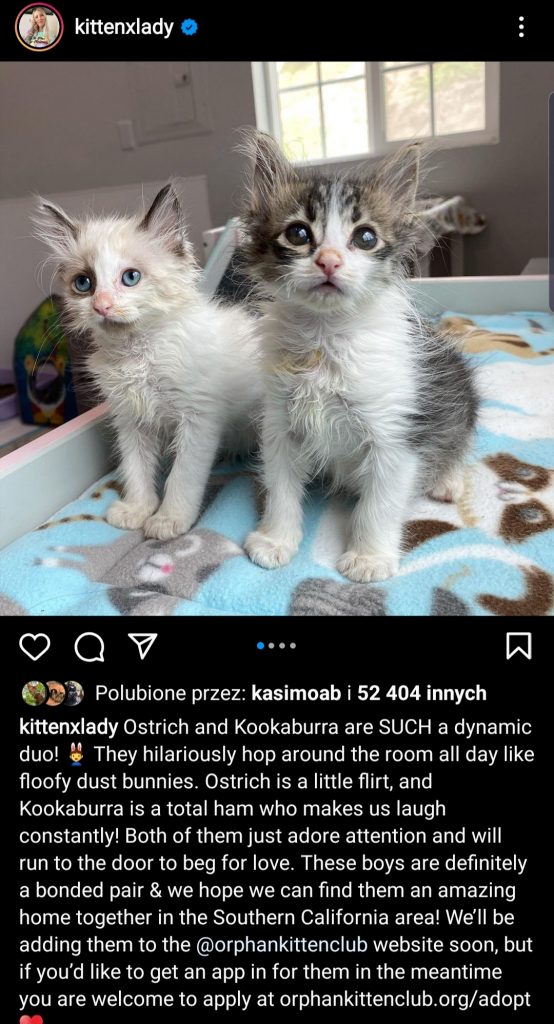
On Instagram, a carousel of photos can showcase progress a rescued animal has made until that point. This strategy is frequently used by rescuers to present the real value of their work and the money they had raised before and put to work. In the post above, Kitten Lady, the founder of Orphan Kitten Club, shares kittens all grown-up and ready to be adopted.
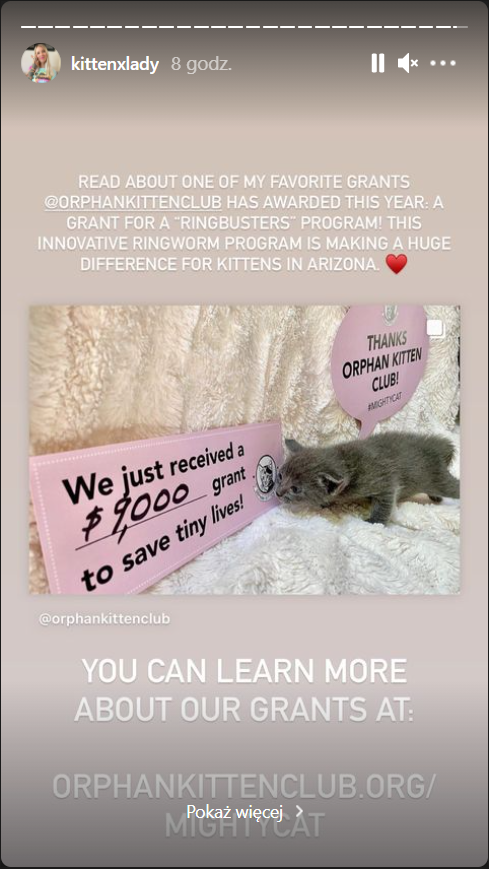
It’s also advisable to share your underperforming social media account on your main channel, whether in the main feed post or in the Stories. It’s especially prudent when you’re sharing a success or a very important event that will help spread the word about your organization.
Moreover, it’s great to show your human face in the Stories, share a happy moment, or show support for other organizations. People can get tired of getting bombarded with gruesome pictures or sad news. Try to achieve a balance on your feed and in the Stories.
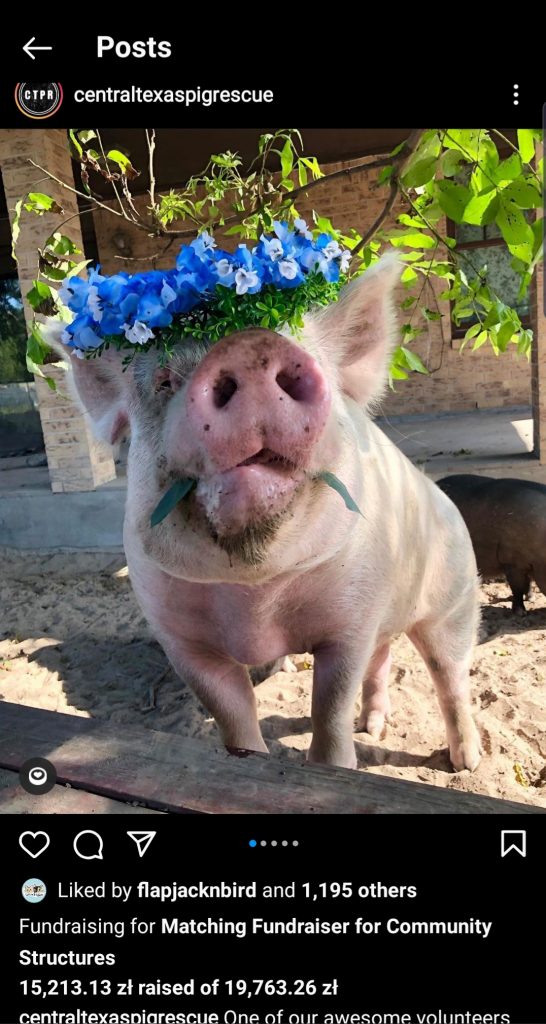
Best social media for nonprofits: #3 TikTok
Can you share a lot in a 60-second video? Well, it depends on how you want to tell your story. TikTok is very specific about what gets round on the app, and you have to master the music, the trends, and then put the pieces together to create a clip that will catch the scrolling user’s attention.
While it may be upsetting to some, rescuers and rescue groups often share the reality of their daily work with cats and dogs on the streets. People empathize with the poor creatures, and seeing the awful state they’re in, chip in to help them. That’s one strategy that Cats of San Bernardino use while trying to make people donate to a specific case.
However, this is not their (and other nonprofit accounts’) only strategy.
Give something in return
To be fair, if the organization has a creator’s account, even just watching a video is already “making” them some money. Therefore, it’s good to show clips that are enjoyable to watch and “give” something to the viewer. It may be a positive video just like the one below, showing cat’s affection and gratitude.
Sometimes even just numbers do the talking… and when those “numbers” also meow and present their tails, they wow the audience.
Make it fun
TikTok is, first and foremost, an app for entertainment. Even though the causes of a nonprofit may be very serious, and their work extremely important, it can’t hurt to present it in a fun way. Of course, some grave topics deserve a different, sensible, and dignified presentation. However, whenever it is possible, to be on-trend, show something fun or positive, and still do your work, it’s worth a try.
For example, Murphy’s kitten decided to present some of their cats one by one, using the trend “do you really know your friend/SO”.
For the Love of Kitten rescue chose one particularly vocal kitty to be their mascot and ambassador on TikTok. He’s a veritable star now, people write hundreds and thousands of comments about Ed the kitten, and share clips outside the app. That generates real views for the creator and traffic on their account. See how clever and hilarious captioning attracts millions of views and likes.
Leverage trends and humour
TikTok trends have great power. Obviously, your video can go viral even without trendy music, effects, hashtags, and so on. However, if you’re trying to make it in the TikTok world, chances are that you will struggle. The fresher the trend, the more views you will get for participating thanks to the algorithm. Sometimes it may be just catchy music and a video that works with the rhythm, like the one below.
Other times it’s plain and simple “laughing at” with no real victims because the zoo animals don’t really see the video or hear the creative “insults”. This particular trend started as presenting quirks, but it is often modified to suit the agenda and meet the needs of the creator.
To put it shortly, a good ol’ sense of humor sells regardless of the platform.
Best social media for nonprofits: #4 Youtube
What is important, YouTube is vastly different from any other social medium mentioned in this article. On other social media, people accept fragmentariness and the fact that updates will follow soon in other posts. YouTube is merciless and wants the video to encapsulate the whole story perfectly.
This applies to nonprofits as well. A clip that may be a part of a bigger whole or a teaser. Likewise, the same is true if the video is part of a series. Otherwise, it’s advisable to really think on our story and how it should be told and what it should end with.
Flatbush Cats uploads sparsely, however their videos are well-thought-out and show the entire journey to recovery/adoption of a group of cats or one street cat. The voice of the narrator is soothing and very calm even though the topics can be weighty. We see each and every step that was taken to make the cat adoptable, and then we can decide for ourselves if we want to support the cause. Buttons designed specifically for that will help us “thank” the creator for their work.
Show your personality
Sometimes the fate of the nonprofit will be decided on the basis of the people who appear in the materials. That has been the case with VetRanch, where a group of veterinarians/animal rescuers have teamed up to create a support group for creatures who need it most. The commenters and subscribers of the channel often mention how much they like this or that vet appearing in the clip and ask about others if they have been absent for a while. Ultimately, the character and personality of those vets is what continues to draw users to their initiatives and channels.
Reminder: Fast & easy linking in Instagram and TikTok bios
With Postfity’s feature MyList.bio you can create neat and convenient linking minisites for your Instagram and TikTok account bios and other apps. See how to create and navigate your own MyList.bio here. Join Postfity and use this incredible tool — with a free 30 day trial!
[reblex id=’20088′]



